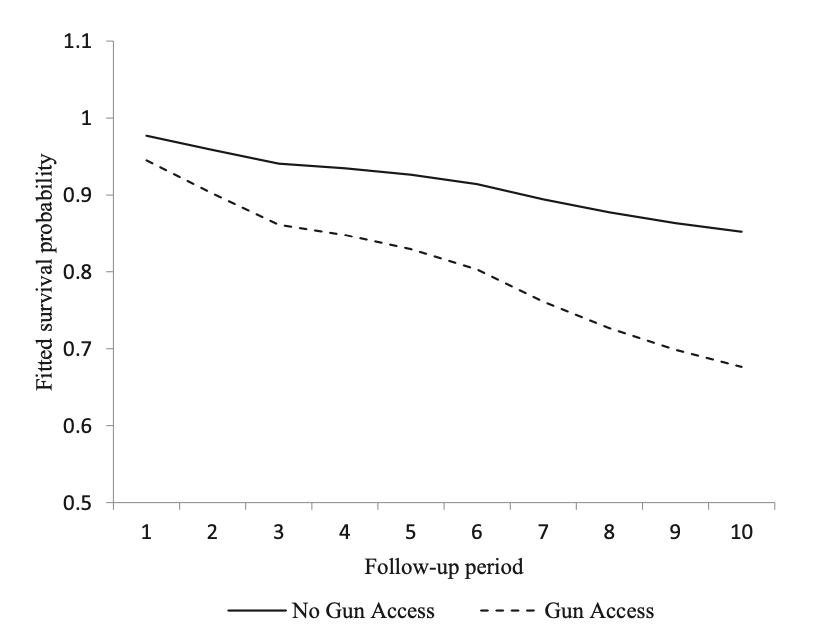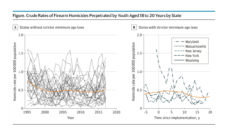In the United States, we have more guns than people. We outrank all other countries and territories for civilian-held guns per capita, accounting for 4% of the world’s population and close to 40% of its guns. In one recent survey, 40% of United States respondents reported they lived in a household with guns and 72% said they have shot a gun at some point in their lifetime. For the vast majority of Americans, guns have become part of our everyday lives—whether we are owners ourselves or simply consumers of the news and other media.
The United States saw over 39,700 gun-related deaths in 2019. Public health organizations have designated gun violence as a crisis and epidemic, with urgent calls for research and policy aimed at evaluating and mitigating risk. Following highly publicized incidents of gun violence including mass shootings, there is often increased focus upon characteristics of individual perpetrators. This has included disproportionate media emphasis upon racial and ethnic backgrounds and framing of mental illness as a causal factor, accompanied by troubling calls by politicians for mass institutionalization and civil rights violations. Although research has identified links between contextual factors including gun access and violent crime at the population level, this has received far less attention.
We analyzed data from 1,354 justice-involved youth aged 14-18 to evaluate the contribution of both individual and contextual risk factors for gun violence. We examined measures of mental illness symptoms, demographics, several previously established risk factors for crime, and ratings of neighborhood gun accessibility in statistical models predicting youths’ risk for gun violence over a seven-year period.
We found that youth who rated guns as being easily accessible in their neighborhoods were at almost 2.5 times increased risk for gun violence over time compared with those who rated guns as being less easily accessible in their neighborhoods. The graph provides a visual illustration of this effect. The “fitted survival probability” can be understood as a protective index representing likelihood to refrain from gun violence over time.

Even more striking was that, following gender, ratings of neighborhood gun accessibility were the most powerful predictor of gun violence among these justice-involved youth. This effect remained even after controlling for other commonly established risk factors for violence in statistical models.
When accounting for contextual ratings of neighborhood gun accessibility, the only demographic indicators associated with gun violence were being of younger age and male gender. We did not find differences in risk for gun violence based on racial or ethnic identity. General ratings of mental illness symptomatology were not associated with gun violence. However, youth who reported experiencing one cluster of symptoms named “threat control override” were at 56% increased risk for gun violence. Threat control override experiences can include feeling generally suspicious of and hostile toward others. Importantly, experiences are not diagnostic classes of mental health symptoms and may represent a learned response among youth within the criminal justice system.
Importantly, experiences are not diagnostic classes of mental health symptoms and may represent a learned response among youth within the criminal justice system.
Our findings call attention to the importance of considering both individual and contextual factors in attempts to mitigate youth gun violence as a national public health concern. Lethal means restriction is one recognized and powerful intervention for decreasing firearm-related suicides. Our findings regarding youth ratings of neighborhood gun access suggest it may also help prevent gun violence.
Some individuals may be more likely than others to engage in gun violence. But, when it comes to evaluating and mitigating risk, context matters. By considering both context and individual characteristics, interventions and policy targeting gun violence will be better equipped for success.
Photo via Getty Images














